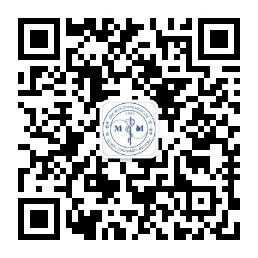目的 探讨脊柱微创通道单侧入路双侧减压治疗腰椎管狭窄症的临床疗效。方法 回顾性选取2019年7月至2023年6月在钦州市第二人民医院住院并行手术治疗的50例腰椎椎管狭窄症患者为研究对象。由同一组手术医生对患者行脊柱微创通道单侧入路双侧神经根减压手术治疗。记录手术时间、术中出血量、住院时间等指标,术前、术后第3天采用日本骨科学会(JOA)评分评估腰椎功能,采用疼痛视觉模拟量表(VAS)评分评估疼痛情况,记录术后1个月、3个月和6个月时椎管横截面积差和硬膜囊横截面积差,以及患者随访期间的不良反应情况。结果 50例患者手术时间75~315(206.02±57.06)min,术中出血量10~25(16.88±3.87)mL,术后住院时间3(2.00,3.80)d。与术前相比,术后第3天患者的JOA评分显著增加,VAS评分显著降低,差异均有统计学意义(均P<0.05)。根据改善率公式,总体改善率为(50.10±8.73)%,显著有效6例(12.00%),部分有效44例(88.00%)。术后1个月、3个月和6个月,50例患者的椎管横截面积差、硬膜囊横截面积差比较,差异均无统计学意义(均P>0.05)。50例患者术后均随访6个月,期间发生伤口感染1例(2.00%),血栓形成1例(2.00%),神经根刺激症状3例(6.00%)。结论 脊柱微创通道单侧入路双侧减压手术是一种简便、安全且有效的治疗腰椎管狭窄症的微创技术,能够显著改善临床症状,减轻疼痛程度,手术效果稳定,值得在临床推广应用。
微创医学 页码:177-183
作者机构:钦州市第二人民医院,1 骨科三区,2 麻醉科,广西钦州市 535000
基金信息:▲基金课题:广西壮族自治区卫生健康委员会自筹经费科研课题(编号:Z20191082) *通信作者
- 中文简介
- 英文简介
- 参考文献
Objective To evaluate the clinical efficacy of unilateral approach with bilateral decompression via spinal minimally invasive channel in the treatment of lumbar spinal stenosis. Methods A retrospective study was conducted on 50 patients with lumbar spinal stenosis who received surgical treatment at Second People's Hospital of Qinzhou from July 2019 to June 2023. All patients underwent unilateral approach with bilateral nerve root decompression via spinal minimally invasive channel performed by the same surgical team. The operation time, intraoperative blood loss, hospital stay and other indicators were recorded. Before and on the 3rd day after surgery, the Japanese Orthopaedic Association (JOA) scores were used to evaluate lumbar function, and the Visual Analogue Scale (VAS) scores were used to assess pain. The changes in cross-sectional areas of the spinal canal and dural sac at 1, 3, and 6 months post-surgery, along with the adverse reactions during the patients' follow-up period, were recorded. Results For the 50 patients, the operation time was 75-315 (206.02±57.06) min, intraoperative blood loss was 10-25 (16.88±3.87) mL, and postoperative hospital stay was 3 (2.00, 3.80) d. Compared with preoperative values, the JOA scores of patients significantly increased and the VAS scores significantly decreased on the 3rd day after surgery, with both differences being statistically significant (all P<0.05). According to the improvement rate formula, the overall improvement rate was (50.10±8.73)%, with 6 cases (12.00%) showing significant effectiveness and 44 cases (88.00%) showing partial effectiveness. At 1 month, 3 months, and 6 months postoperatively, there were no statistically significant differences in the differences of spinal canal cross-sectional area and dural sac cross-sectional area among the 50 patients (all P>0.05). Over a 6-month postoperative follow-up period for all 50 patients, complications comprised 1 case (2.00%) of wound infection, 1 case (2.00%) of thrombosis, and 3 cases (6.00%) of nerve root irritation symptoms. Conclusion The unilateral approach with bilateral decompression via spinal minimally invasive channel represents a simple, safe, and effective minimally invasive technique for treating lumbar spinal stenosis. It can significantly alleviate clinical symptoms, reduce pain severity, and maintain stable surgical outcomes, making it a worthy procedure for clinical promotion and application.
- ref




 注册
注册 忘记密码
忘记密码 忘记用户名
忘记用户名 专家账号密码找回
专家账号密码找回 下载
下载 收藏
收藏
